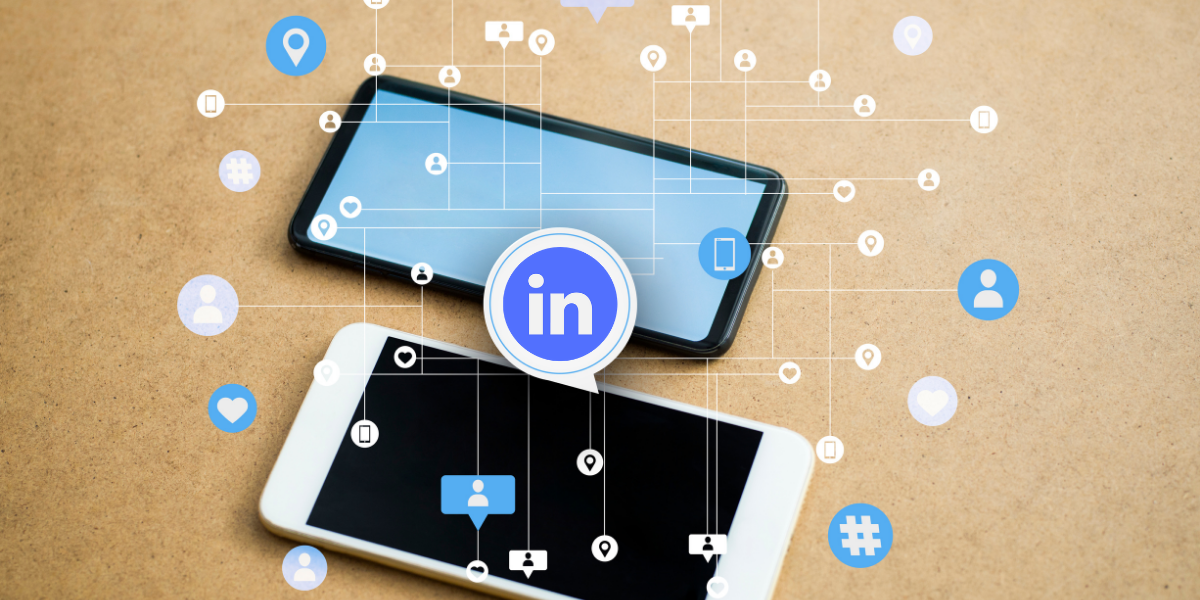With more than 706 million members, many of whom have buying power within the companies that they work for, LinkedIn represents a great marketing opportunity for B2B businesses.
To ensure your advertising campaigns on LinkedIn are generating leads for your company, it’s important that you are making the most of the platform’s lead generation forms, as well as creating a strategy for bidding, budgeting and targeting your audience with focused campaigns.
Afiya Addison, Global Program Manager of the B2B Institute - a think tank funded by Linkedin that researches the future of B2B marketing and decision making - discussed some best practices for LinkedIn advertising at the recent Inbound 2020 event hosted by HubSpot. The Brit Agency attended the session, and has summarised her advice here:
Why use LinkedIn for your B2B marketing initiatives?
LinkedIn has more than 706 million members using its platform, meaning your business can reach decision makers at scale. In fact, those members have two times the buying power compared to other platforms and four out of every five members drive business decisions at the companies they work for.
That’s why B2B marketers cite LinkedIn as the most effective platform for lead generation:
- LinkedIn (82 percent)
- Facebook (62 percent)
- Twitter (48 percent)
Not only that, but LinkedIn also helps you to connect with buyers who have the authority to take action on your advertising. That’s why the use of LinkedIn’s lead generation forms can help your business
- Generate high-quality leads at scale.
- Prove the return on investment (ROI) of your lead generation campaigns.
- Access and manage your leads with ease.
So, what are LinkedIn lead generation forms?
LinkedIn’s lead generation forms are designed to increase conversion rates by placing CTAs on your ads, making it easier for users to take action and improving the chance that your advertising campaign will generate leads.
When users click the CTA they are taken to a form, but instead of manually filling out the fields, LinkedIn automatically pulls all of the required information from the user’s accounts. All the user has to do is confirm their email address and hit submit.
Once submitted, users receive a thank you page and a direct link to the content or page you were promoting in your advertisement.
LinkedIn’s pre-filled forms are:
- Easily customizable.
- Pre-filled automatically with member profile data.
- Optimized for mobile and desktop to increase conversions.
- Integrated directly with HubSpots marketing automation and CRM.
- Layered on top of sponsored content and sponsored messaging ads.
Here are the LinkedIn Ads best practices for content and form creation:
#1 - Form fields should be kept to the minimum: It’s recommended that your organization uses around five fields or fewer when creating your LinkedIn lead generation forms.
#2 - Use linkedIn predefined questions or fields where possible: With LinkedIn’s lead generation forms you have the ability to add custom questions, but you can create a more efficient process for the user by using the predefined questions where possible.
#3 - Use drop down menu for custom questions: If you do create custom questions on your lead gen forms, you can make it easier for customers to answer by including a drop down menu with a multiple choice list of answers that they can select from.
#4 - Make sure images and copy are relevant: When creating your form make sure you double check it to ensure that you have aligned the correct copy and the correct images with what you are trying to promote.
#5 - Be direct with your CTA: While double checking your copy and images, also make sure that your messaging really matches your call to action. Messaging can be the difference between a poor lead generation campaign and a successful one.
#6 - Keep lead generation forms fresh: It can be easy to create your form and then leave it as part of your campaign for the next year. It’s actually beneficial to keep your lead gen forms fresh, and you should update them every two months or so.
Here are the LinkedIn Ads best practices for bidding and budgeting:
#1 - Select a daily budget that fits the size of your audience: Sit down and come up with a daily budgeting strategy that fits the size of the audience that you are trying to reach - $100 is a decent place to start for the majority of companies.
#2 - Check regularly to see how much of that budget is being consumed: How much of that budget is being consumed every day? If you are reaching your daily budget consistently you may have a chance to either up that daily budget and reach more of that audience on a daily basis, or optimize where the budget is being spent.
#3 - Start with a broad audience so you can optimize over time: LinkedIn recommends that B2B marketers always start with a broad audience, which they can narrow down over time if required.
#4 - Bid based on your campaign priorities: When making a bid, make sure it’s based on your campaign priorities. LinkedIn has an automated bidding option as well as the option to save your audience as a template, which can help the bidding process and ensure you are focused on your campaign priorities.
Are you interested in learning more about how LinkedIn advertising can be used to generate new leads for your B2B business? Contact The Brit Agency today. Our team of B2B Inbound Marketing experts would love to answer any questions that you may have.

